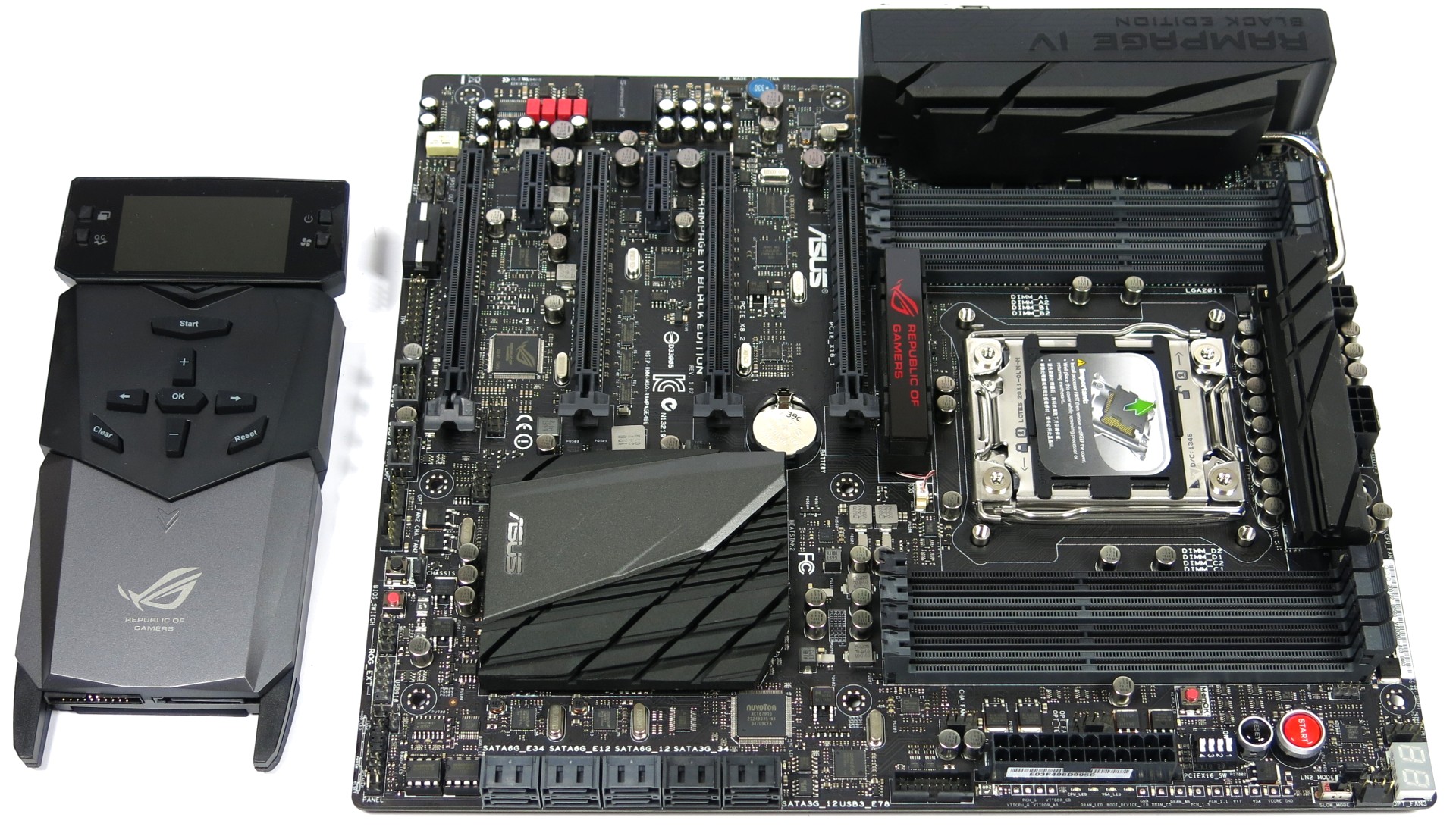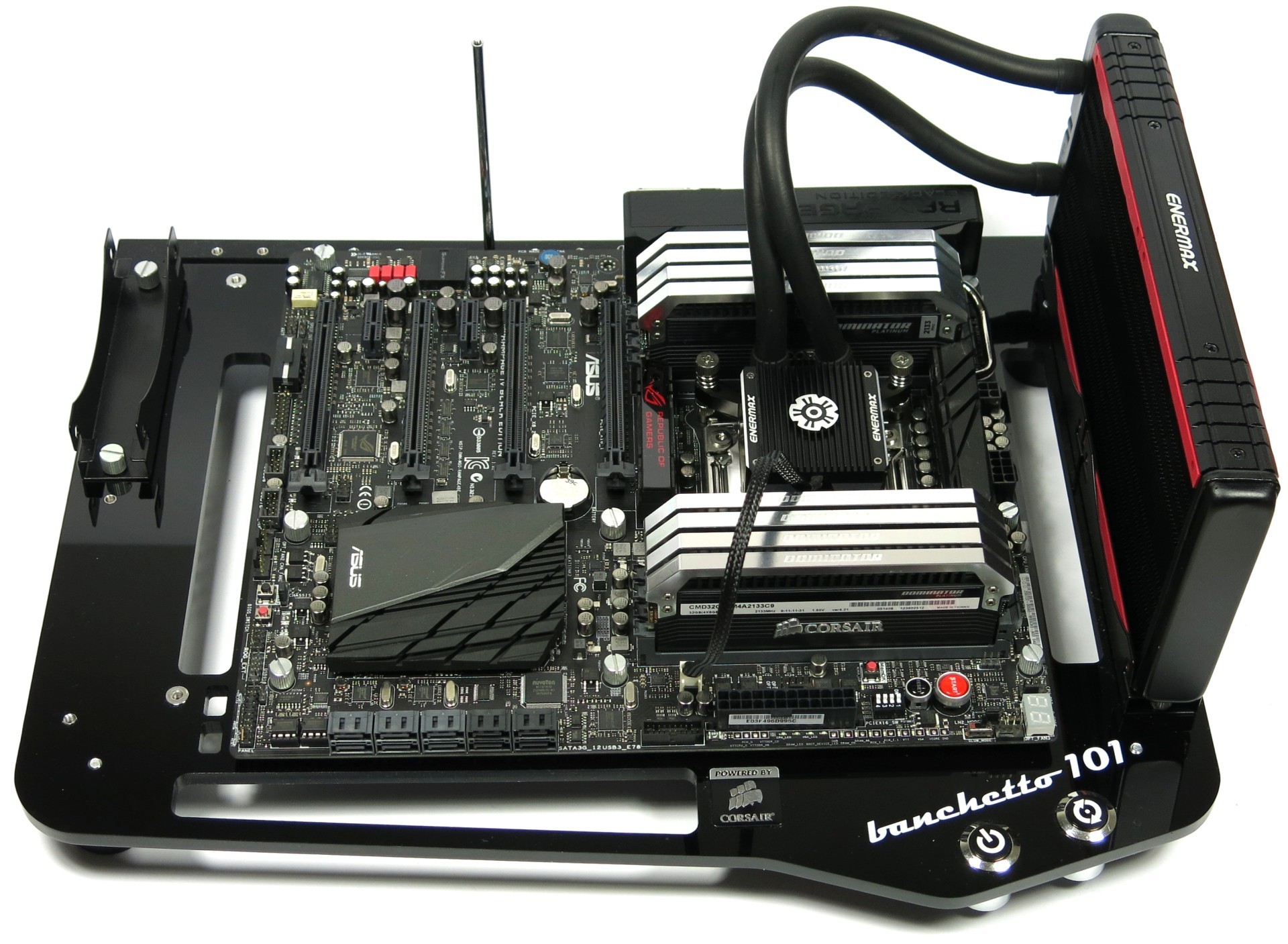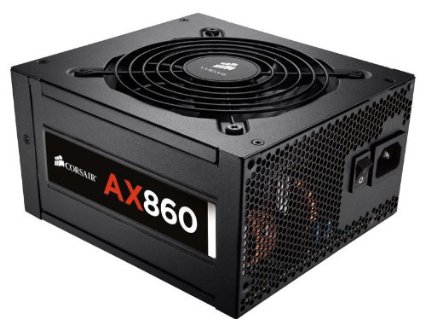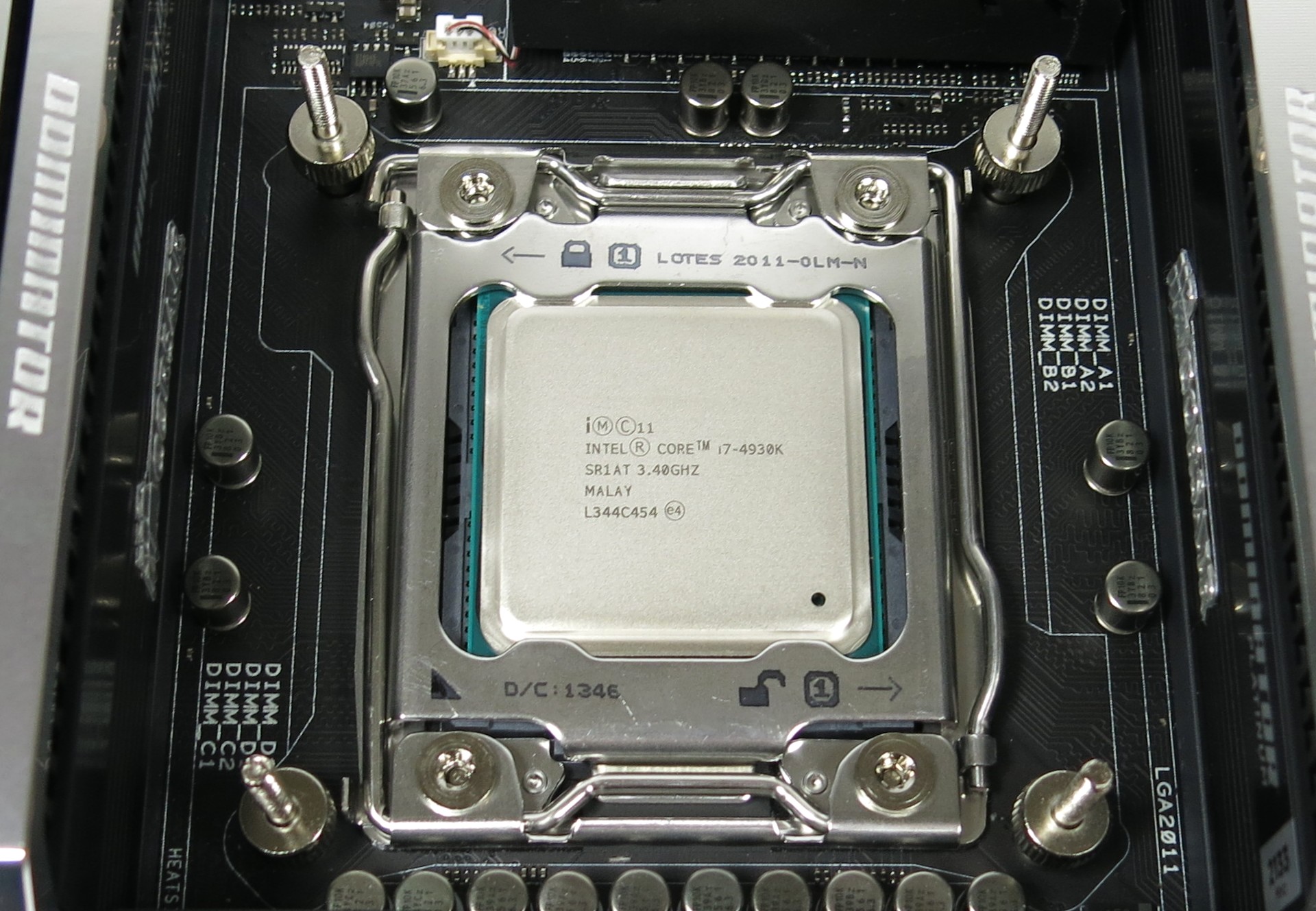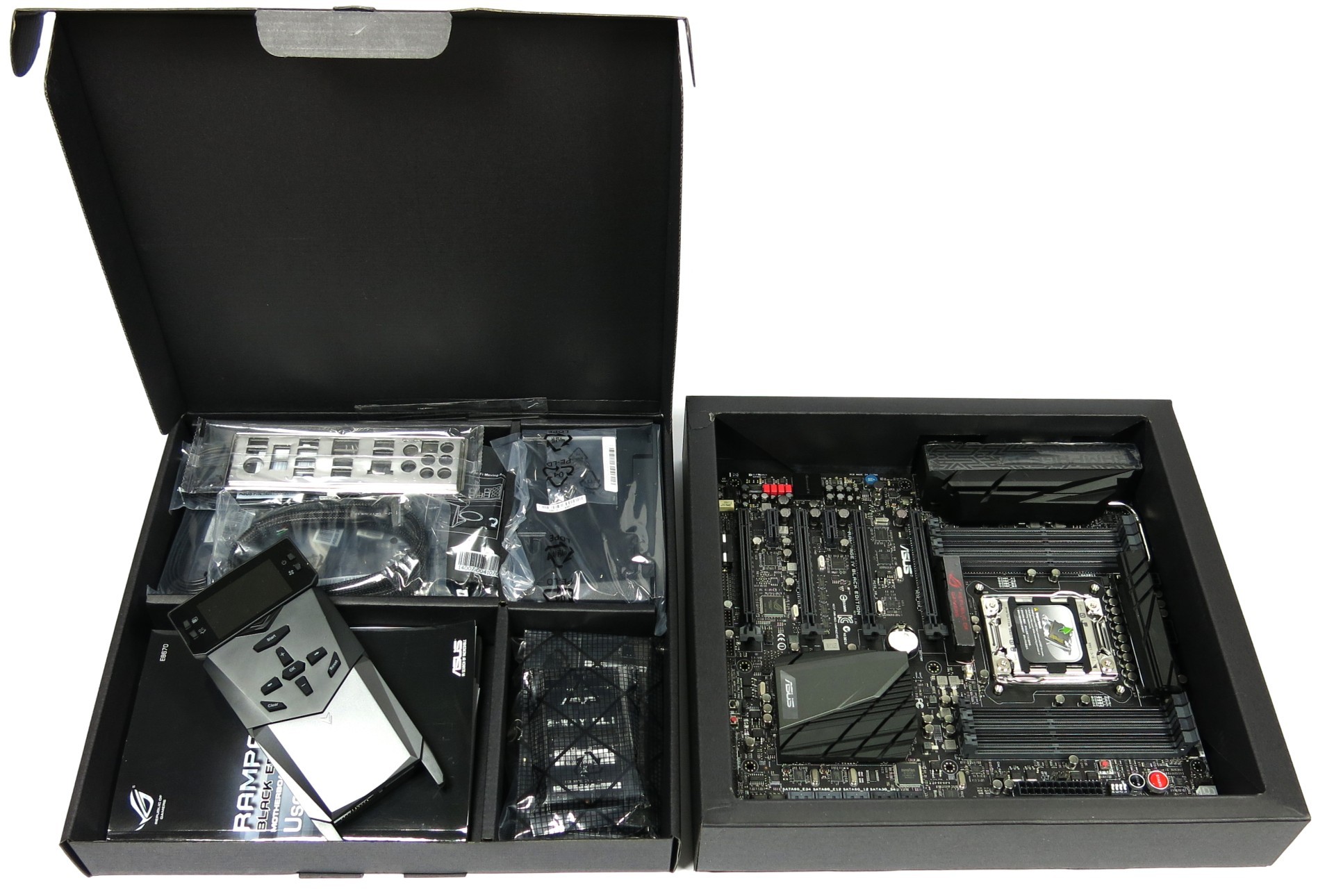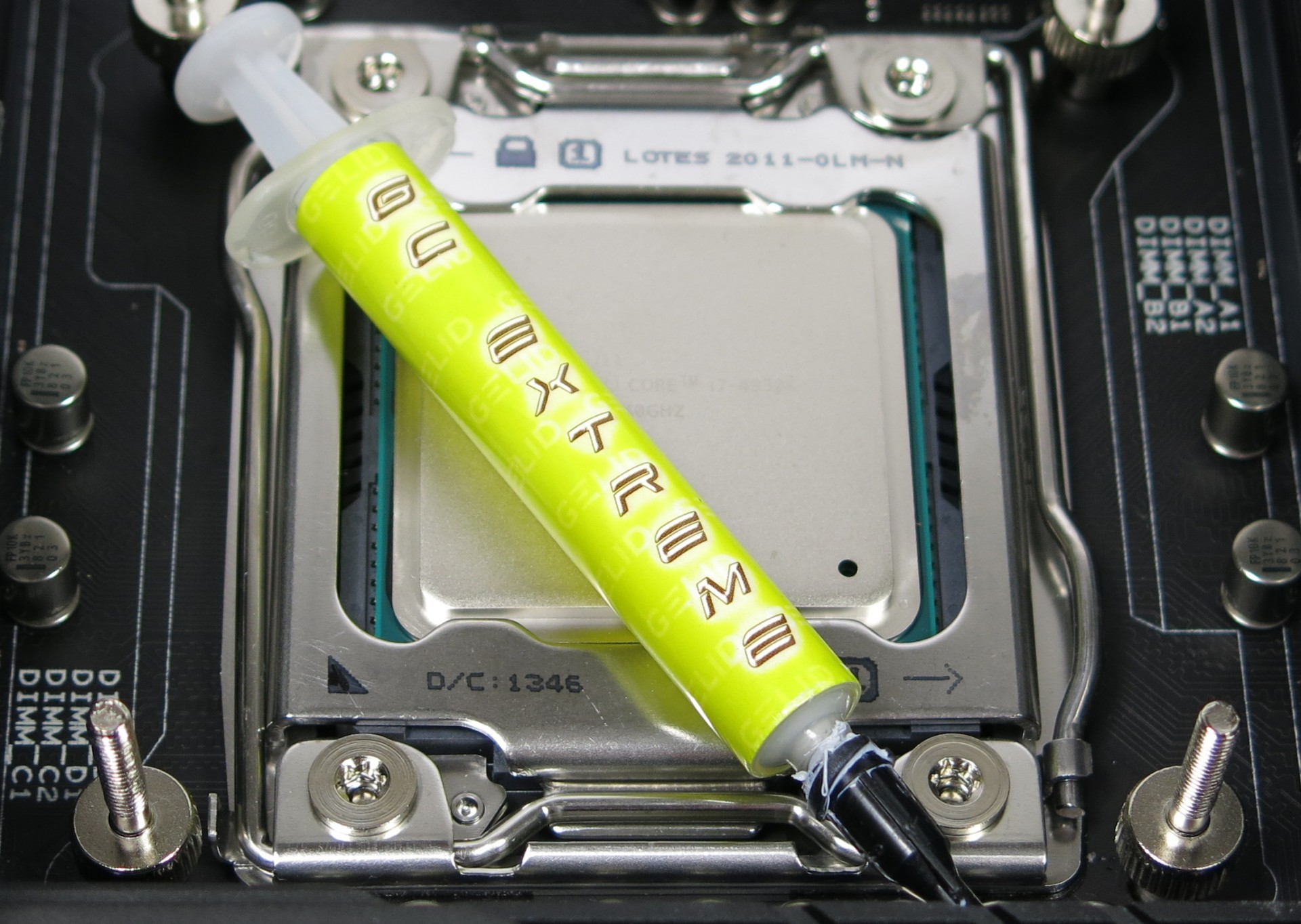Tom's Hardware Graphics Charts: Performance In 2014
Two years and two graphics card generations have passed since the last major update to our famous graphics card performance charts. It's time to get them back up to speed. We introduce modern benchmarks, new measurement equipment, and fresh methodology.
The Components In Our Reference Build
The following table includes the components in our 2014 Reference System:
| Bench Table | Microcool Banchetto 101 |
|---|---|
| System | Intel Core i7-4930K (Ivy Bridge-E), Overclocked to 4 GHzAsus Rampage IV Black Edition, X79 Express32 / 64 GB Corsair Dominator Platinum DDR3-2133Enermax TLC 240 Closed-Loop Liquid Cooler1 x 512 GB Samsung 840 Pro1 x 256 GB Samsung 840 Pro |
| Power Supply | Corsair AX860i with Modified Rail (for Power Consumption Measurement) |
CPU: Intel Core i7-4930K
Last year, we discovered that our overclocked Core i7-3770K occasionally interfered with our graphics benchmarks. Since we're planning to use this platform for workstation-oriented applications as well, it's time to toss the mainstream stuff and go with an LGA 2011-based Core i7-4930K sporting six cores and able to schedule 12 threads. In the gaming charts, it's overclocked to 4 GHz. When we switch over to the professional hardware, I drop it back to 3.4 GHz.
Motherboard: Asus Rampage IV Black Edition
The foundation of any system is a solid motherboard able to facilitate stable, consistent results.
It's no coincidence that I went with Asus' Rampage IV Black Edition, then. Not only is it easy to get running the way I need, but the board also comes with a number of measurement points for taking readings. X79 Express is an old chipset by modern standards, necessitating third-party controllers to enable many of its features. Asus deploys these intelligently.
The Asus Rampage IV Black Edition’s four 16-lane PCI Express slots run in any number of different link configurations; we'll only need them to run in two-way CrossFire or SLI at full x16 bandwidth.
Cooling
We got lucky with our CPU. After making our way through the Rampage IV Black Edition's seemingly endless list of settings, the Core i7-4930K settled in with all six cores stable at 4 GHz without increasing voltage. In fact, there was even some headroom available to lower it a bit.
That good behavior reflects in the thermals. Using Enermax's ELC240 closed-loop liquid cooler, they wouldn't exceed 67 degrees Celsius after an hour of running LinX.
Get Tom's Hardware's best news and in-depth reviews, straight to your inbox.
The highest overclock that makes sense on this system is 4.5 GHz, giving us some room to grow in case we're able to identify a performance bottleneck at some point in the future.
Thermal Paste for Our Benchmark System and Graphics Cards
We're cooling a fairly high-power CPU, plus taking apart and reconfiguring a lot of graphics cards. That means we need an effective thermal paste. After a lot of testing over the past two years, our German team has settled on Gelid's GC-Extreme, since it's easy to apply and doesn't require any special burn-in period.
For more information on thermal paste testing and the research we've put into it, check out Thermal Paste Comparison, Part One: Applying Grease And More and Thermal Paste Comparison, Part Two: 39 Products Get Tested.
Current page: The Components In Our Reference Build
Prev Page Introducing Our Reference System And Methodology For 2014 Next Page How We Measure Power Consumption
Igor Wallossek wrote a wide variety of hardware articles for Tom's Hardware, with a strong focus on technical analysis and in-depth reviews. His contributions have spanned a broad spectrum of PC components, including GPUs, CPUs, workstations, and PC builds. His insightful articles provide readers with detailed knowledge to make informed decisions in the ever-evolving tech landscape
-
blackmagnum Thank you Tom's team for updating the charts. You're my goto when I'm upgrading my rigs. I'll be waiting... Bring on yesterday's gems.Reply -
tomfreak First thing Tom need is to bench how PCIE 2.0 8x vs 16x perform on a modern top end GPU. Since 290X are passing the bandwidth from crossfire bridge to PCIE, may be is time to check them again? As I recall AMD do not recommend putting 290x XDMA crossfire on PCIE 2.0 8x. Please check this outReply -
cypeq First it's great to see new charts.Reply
I was never a fan of this style of benchmarking. It sure gives clean graph of gpu capabilities which we always needed. I would love to see new bottleneck analysis. Or at least parallel test done on midrange PC.
Everyone should keep mind that these charts represent performance of <1% PC builds out there.
13278215 said:First thing Tom need is to bench how PCIE 2.0 8x vs 16x perform on a modern top end GPU. Since 290X are passing the bandwidth from crossfire bridge to PCIE, may be is time to check them again? As I recall AMD do not recommend putting 290x XDMA crossfire on PCIE 2.0 8x. Please check this out
If I recall correctly we are at this moment at the edge of PCI 2.0 x8 which = PCI 1.0 x16 . Next or following gen will finally outdate PCI 1.0 in single and PCI 2.0 in dual GPU configs as there will finally be noticeable bottle necks. -
mitcoes16 Any Steam OS or GNU/Linux benchmarks?Reply
It would be nice to add any opengl crossplattform game as any ioquake based one or something more modern and test it under MS WOS and under GNU / Linux
Better if it is future Steam OS to let us know the performance at the same game under MS WOS and under GNU/Linux.
Also it would be nice to test at MS WOS with and without antivirus, perhaps avast that is free or any other of your preference.
Last but not least, in opengl or in directx there are version changes and being able to split cards generations by opengl / directx version support would help as a current price / performance index based in your sponsored links prices. -
mitcoes16 No 720p tests?Reply
720p ( 1280x720 píxels = 921.600 píxels) is half 1080p more or less
1080p (1920\00d71080 píxels = 2.073.600 pixels)
And when a game is very demanding or you prefer to play with better graphics playing at 720p is a great option
Of course,latest best GPUs would be able to play at 4k and full graphics, but when we read the benchmarks we want to know also if our actual card CAN play at 720p (1k) or what the best ones can do at 1k to be able to compare
Also even it is not a standard or accurate, for benchmarking purposes calling 720p (1k) 1080p (2k) and 2160p (4K) wouldbeeasier to understand in a fast sight than UHD FHD and HDR, that can be used too UHD (4k) FHD (2k) HDR (1k) -
InvalidError Reply
720p does not stress most reasonably decent GPUs much and how many people would drop resolution to 720p these days with all the re-scaling artifacts that might add? In most cases, it would make more sense to stick with native resolution and tweak some of the more GPU/memory-intensive settings down a notch or two - at least I know I greatly prefer cleaner images over "details" that get blurred by the lower resolution and re-scaling that further distorts it.13278758 said:No 720p tests?
Considering how you can get 1080p displays for $100, I would call standardizing the GPU chart on 1080p fair enough: the people who can only afford a $100 display won't care much about enabling every bell and whistle and the people who want to max everything out likely won't be playing on $100 displays and $100 GPUs either. -
2Be_or_Not2Be I really like to see the charts on how much noise a video card's cooling fans make. That makes more of a difference to me as limiting something distracting that I hear every time I game versus getting a louder card with 10 fps more.Reply
I also like seeing how current cards stack up performance-wise to previous generations. That really helps when you're deciding whether to upgrade or not.
